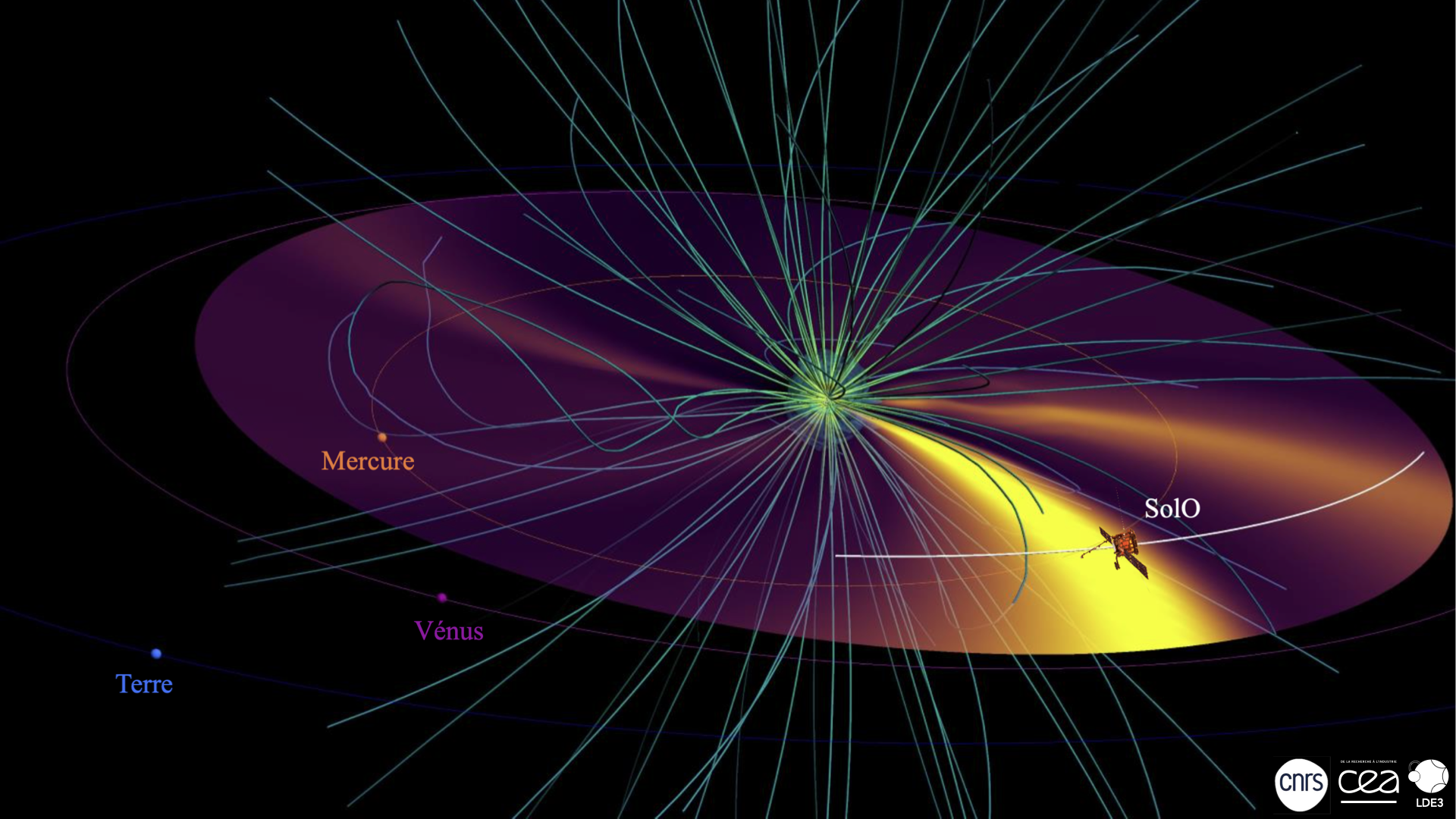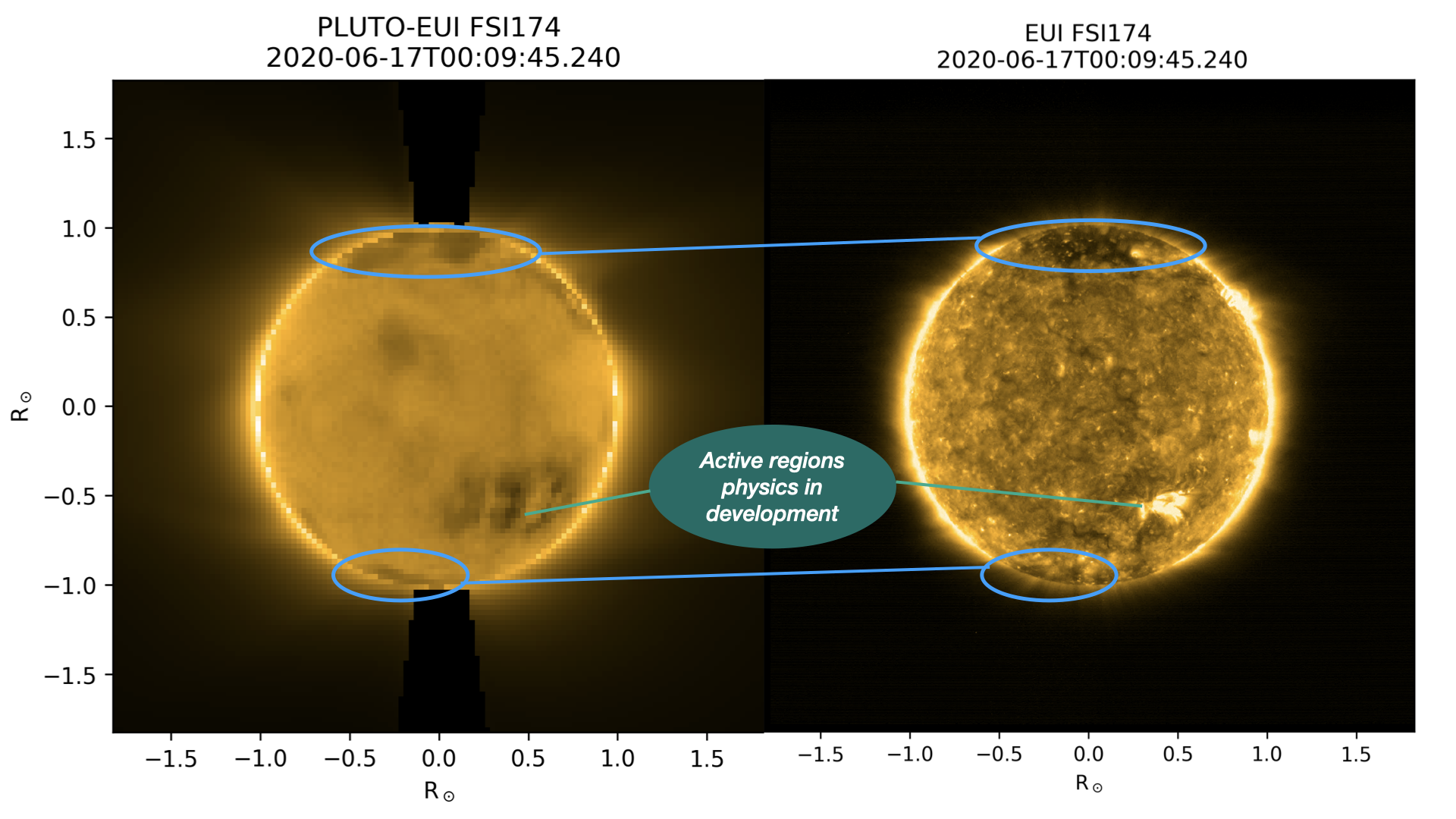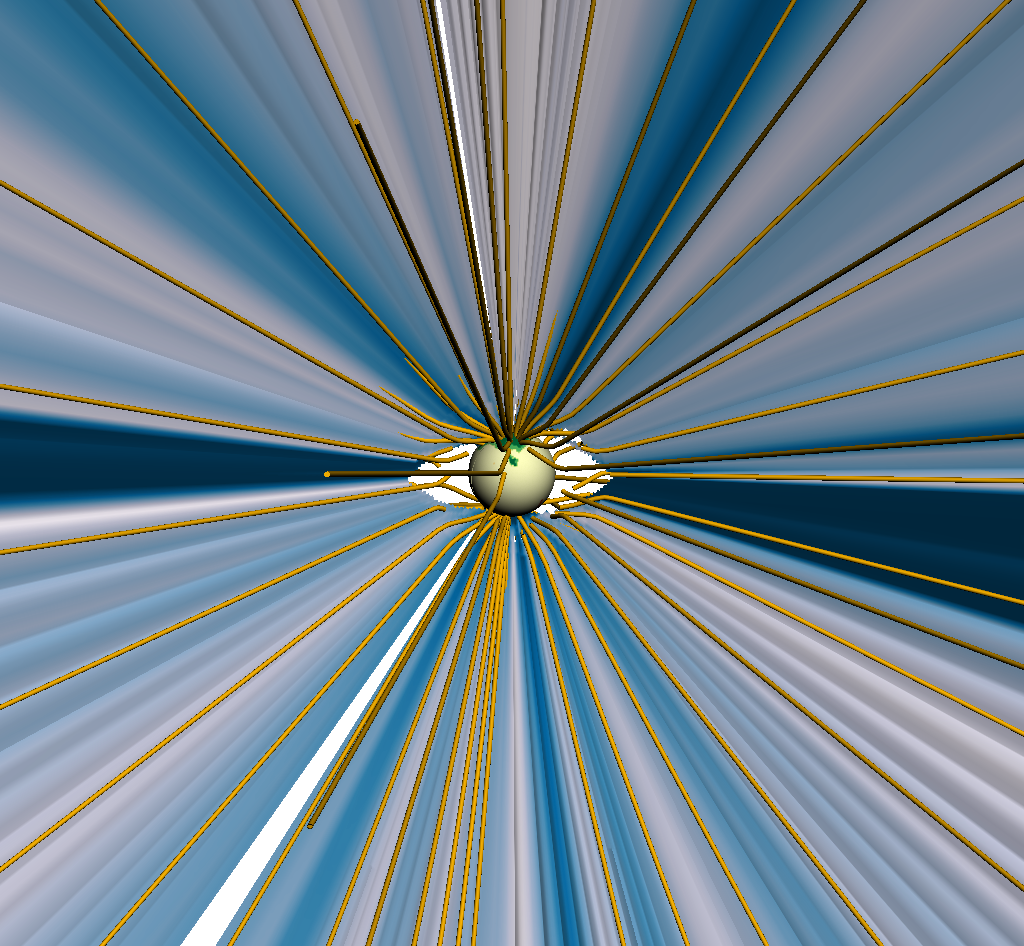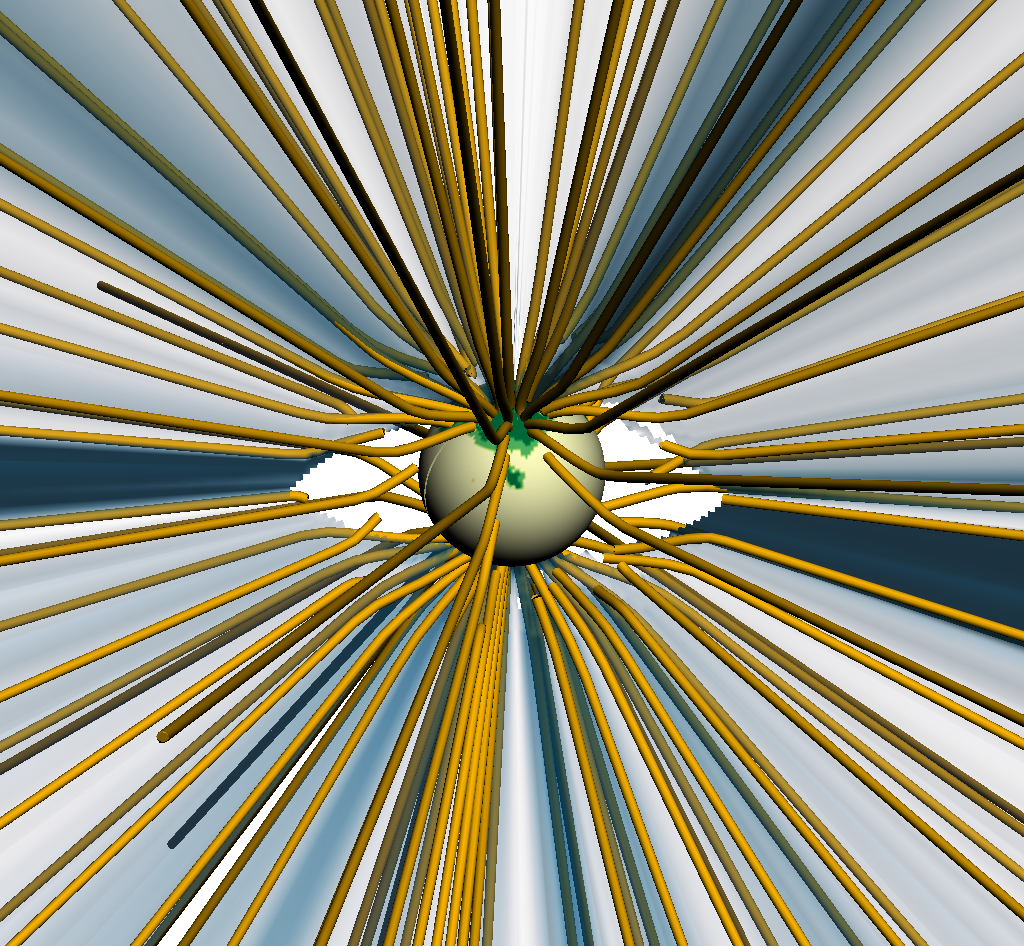Wind Predict - AW

Predicting the solar wind structure for the first perihelion of Solar Orbiter
The structure of the solar wind from the base of the corona to the orbit of Solar Orbiter has been predicted with the WindPredict-AW model (based on AFRL/NSO ADAPT magnetograms). The magnetic structure is shown by the green tubes, while the Alfvén surface of the wind is shown by the transprent blue bubble in the center of the image. The solar wind speed is shown on the plane perpendicular to the rotation axis of the Sun in purple (slow wind of about 300 km/s) and yellow (fast wind of about 800 km/s). The orbit and positon of the inner planets of the solar system are shown, as well the position of Solar Orbiter on June 15th and its orbit between the 5th and 30th of June.

EUV emission in the solar corona during the first perihelion of Solar Orbiter
Solar Orbiter Extreme Ultraviolet Imager/ FSI 174 synthetic image (reduced resolution to 128 x 128), as obtained from the Wind Predict-AW solution for the first perihelion of Solar Orbiter. We have rotated our model to adequately compare the predicted corona with the EUI image obtained on June 17th. Note that the WindPredict-AW model does not include the physics of active regions yet, which is why they do note appear as bright features. The observed data is shown on the right panel, where one can see that the location of the coronal holes observed by Solar Orbiter are well reproduced by WindPredict-AW on the left.
WindPredict-AW is the results of continous efforts by Victor Réville and collaborators while at AIM/LDE3 (A.S. Brun, A. Strugarek, and collaborators), UCLA, and IRAP.
The EUI image was obtained by the ESA/Solar Orbiter/EUI Team: CSL, IAS, MPS MSSL/UCL, PMOD/WRC, ROB.
The Synthetic image was obtained by S. Parenti (AIM/LDE3) using the open-source TomograPy package (Barbey, Guennou, Auchère, 2013, Sol. Phys. ).

